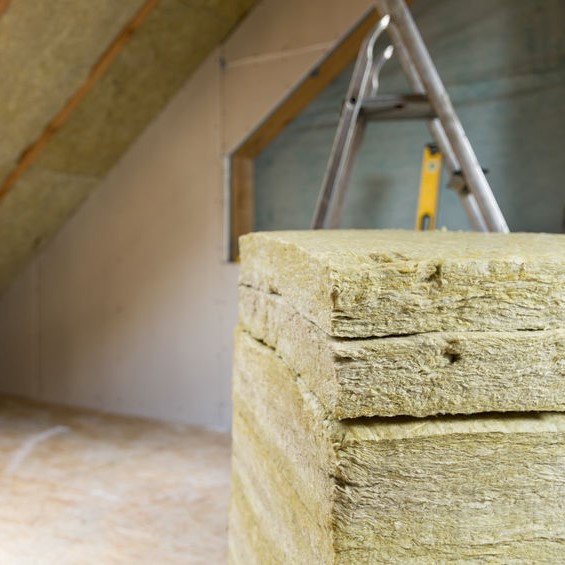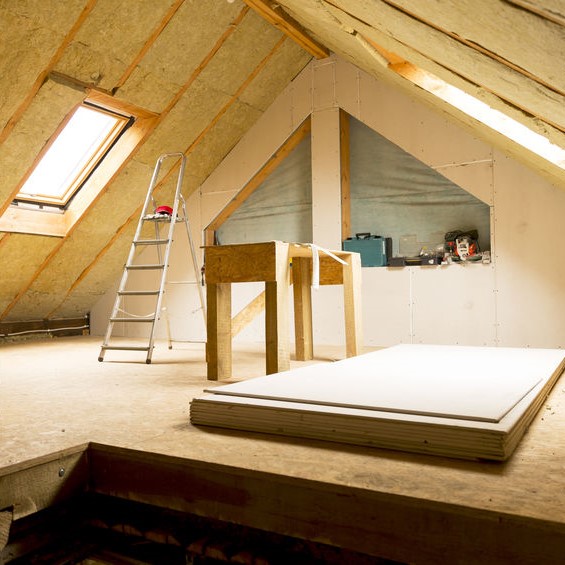
Keeping your property safe and cozy
Winter is about to hit these mountains in Tennessee any day now, is your house ready to keep you warm and cozy? Firewood chopped and ready, HVAC system checked out, supplies for hot chocolate, and roof insulation installed? Whoa, what about roof insulation? What is roof insulation?
Roofing insulation is out of sight, so it is out of mind and doesn’t get much thought or respect., but roof insulation has a purpose. It reduces the overall heat that transfers coefficient by adding low thermal conductivity materials. Roof insulation provides thermal comfort for your family in the winter and summer by reducing heat loss in the winter and unwanted heat gain in the summer. Roof insulation decreases the energy demands to heat and cool your home, making your HVAC system last longer by working less.
What is the difference between Roof insulation vs attic insulation? It can be confusing to know the differences between attic insulation and roof insulation if you’re not in the business of insulation. Both keep your home insulated against that cold Tennessee weather while reducing your heating costs. So, what is the difference, don’t they do the same thing? The main difference between the two is where they are installed.
- Attic insulation= the ceiling plane
- Roof insulation = the roof slope, above and below the ceiling rafters
The installation of attic insulation is the biggest money save initially because it is the first layer of defense between the temperature in your home and the outdoor temperature. So, should I insulate between roof rafters? To clarify the difference of the boards running through your attic: The boards on the attic floor are “joists” and the boards on the underside of the roof are “rafters”.
The object of having your home insulated is to make it as comfortable as possible all year long and save on energy cost as much as possible, right? So, you need protect as much volume of your home as you can, meaning the part you want heated. So, the smaller the volume, the less energy is used and the warmer the area.
- If you aren’t planning on using the attic for anything more than the storage of holiday decorations and baby books, then there isn’t any need to keep it heated, and only the attic floor, the “joists” need to be insulated.
- If you are going to make a useable room out of your attic, then insulate the attic roof, the “rafters” on the pitched roof.
- The best solution is insulating both the joists and rafters. This will keep heat from escaping the rooms below but keep the attic room comfortable too.
Should a roof be insulated?
Insulating the roof space in the attic helps to retain energy inside your home and save you money. It can prevent long term moisture damage and ice damming because of warm air escaping through the apex and heating up the snow. Roof insulation also provides sound proofing on the uppermost area of your home.

What is the best insulation for roofs?
There are five types of roof insulation, each having pros and cons. The main value is the capacity of insulation for heat resistance, or thermal resistance. This is usually measured by R-value, the higher the value, the better the insulation.
- Loose-Fill: One of the most common insulation and is installed into wall cavities for a retro-fit any wall that lacks insulation. It is also blown into attic spaces that are unfinished and is made from cellulose or fiberglass with R-value between R2 and R4. The Pros: relatively inexpensive and easy install. The cons: settles over time which lessens its R-value and vapor barrier is required to absorb moisture.
- Batt and Roll: A the other popular type of insulation is a fiber, prefab blanked rolled material with foil or paper pressed on one side. Good to use on long expansions like attic floors and fits between the rafters. Comes in R-Value from R3 to R3.5. The Pros: Easy to install, inexpensive, and doesn’t settle over time. The Cons: Can irritate the skin, so dressing correct to install is required.
- Spray Foam: Like the loose-fill described earlier but comes in a liquid that turns to foam when applied. Comes in two types, open-cell, and closed-cell. R-value open cell is rated at 3.5 per inch and closed-cell is R6 t and R6.5. The Pros: Has the greatest R-value of all insulation materials and covers all areas better. The Cons: DIY insulation not recommended because of the possible mess it creates. Can be expensive and unsightly when completed.
- Radiant Barrier: This is typically used with other insulation materials and is installed under the roof’s interior for reflective purposes. The R-values are applicable or negligible. The Pros: Great for warm climates with higher temperatures and is easy enough to install for DIY. The Cons; The R-value.
- Rigid Foam Board: To be used above decking and comes in three types: bare foam, one-sided sheathing, or double-sided sheathing. It is made from various synthetic polymer family and has R-Value from R3.8 to R8.0. The Pros: R-value is excellent and provides soundproof quality. The Cons: This is a waterproof barrier that traps moisture if the roof isn’t vented.
Is it better to insulate ceiling or roof?
Nobody will argue that insulation is needed to keep a home comfortable and utilities down, but if you can only afford to insulate the attic floor or attic roof, which one is the better option? The ceiling is the best choice for the following reasons:
- Keeping temperature regulated in living space
- Prevent heat lost, saves on energy bills
- Moisture prevention in attic
- Easier to install, especially in older homes
What thickness should roof insulation be?
Roof insulation options depend on the roof type: Dormer, Flat, or Pitched. For blanket insulation, 250mm to 270mm is recommended. If there is already insulation but looks older, check the depth and add accordingly.
The batt roll insulation, radiant barrier, or rigid board insulation are fairly easy as a DIY job. You can find videos online on how to install roof insulation with those products. The loose-fill or spray foam insulation is better left to professionals. Need professional roof insulation help in Louisville and Chattanooga, TN? Call 865-238-2628 today.